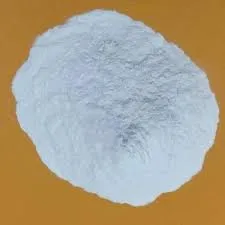
Αυγ . 07, 2024 13:00 Back to list
Enhancing Cement Adhesion with Innovative Bonding Additives for Improved Construction Applications
The Role of Cement Bonding Additives in Modern Construction
Cement bonding additives play a pivotal role in enhancing the performance and durability of cement-based materials. As construction technologies advance and demands for more resilient structures grow, the utilization of these additives has become increasingly significant. By improving the bonding properties of cement, these additives not only ensure stronger connections between materials but also help mitigate common issues associated with traditional cement mixtures.
Cement, in its natural state, is an inherently porous material. This porosity can lead to several challenges, including reduced strength, increased susceptibility to water infiltration, and potential damage from freeze-thaw cycles. Cement bonding additives address these challenges by modifying the physical and chemical properties of the cement paste. These additives, which can range from organic compounds to inorganic minerals, play a crucial role in improving adhesion between cement and other construction materials, such as aggregates, bricks, and existing structures.
One of the most significant benefits of using cement bonding additives is the enhancement of the overall strength of the cement matrix. By providing better interfacial bonding, these additives reduce the likelihood of delamination or separation of layers. For instance, in applications such as plastering or applying new concrete overlays, the presence of bonding agents ensures that the new layer adheres effectively to the substrate. This is especially crucial in repair and renovation projects where the integrity of existing structures must be maintained.
cement bonding additive

Moreover, cement bonding additives often improve the workability of cement mixtures. This can lead to easier application and better finishing results. Additives such as polymer emulsions and surfactants can help achieve a smoother consistency, allowing workers to apply the materials more efficiently. Increased workability not only enhances the ease of handling but also contributes to a more uniform distribution of the cement mix, which is essential for achieving optimal strength and durability.
In addition to improving adhesion and workability, many bonding additives offer resistance to environmental factors. For example, some additives are designed to enhance water resistance, preventing moisture intrusion that can lead to efflorescence or damage from mold and mildew. Others may provide increased resistance to thermal and mechanical stresses, making them suitable for use in high-durability applications such as bridges, tunnels, and industrial floors.
The importance of sustainability in modern construction cannot be overstated. Many cement bonding additives are now being developed with a focus on eco-friendliness. Bio-based additives derived from renewable resources offer an alternative to traditional petrochemical products. Furthermore, the use of certain waste materials, such as fly ash or slag, as bonding additives not only recycles industrial byproducts but also reduces the carbon footprint associated with cement production.
Overall, the incorporation of cement bonding additives into construction practices presents numerous benefits, from enhancing the strength and durability of structures to improving workability and sustainability. As the construction industry continues to evolve, the demand for advanced bonding solutions will likely grow, prompting further innovation and research in this field. By exploring new materials and formulations, the industry can meet the challenges of modern construction, ensuring that buildings and infrastructures are not only safer and more resilient but also more environmentally friendly.
-
Versatile Hpmc Uses in Different Industries
NewsJun.19,2025
-
Redispersible Powder's Role in Enhancing Durability of Construction Products
NewsJun.19,2025
-
Hydroxyethyl Cellulose Applications Driving Green Industrial Processes
NewsJun.19,2025
-
Exploring Different Redispersible Polymer Powder
NewsJun.19,2025
-
Choosing the Right Mortar Bonding Agent
NewsJun.19,2025
-
Applications and Significance of China Hpmc in Modern Industries
NewsJun.19,2025







